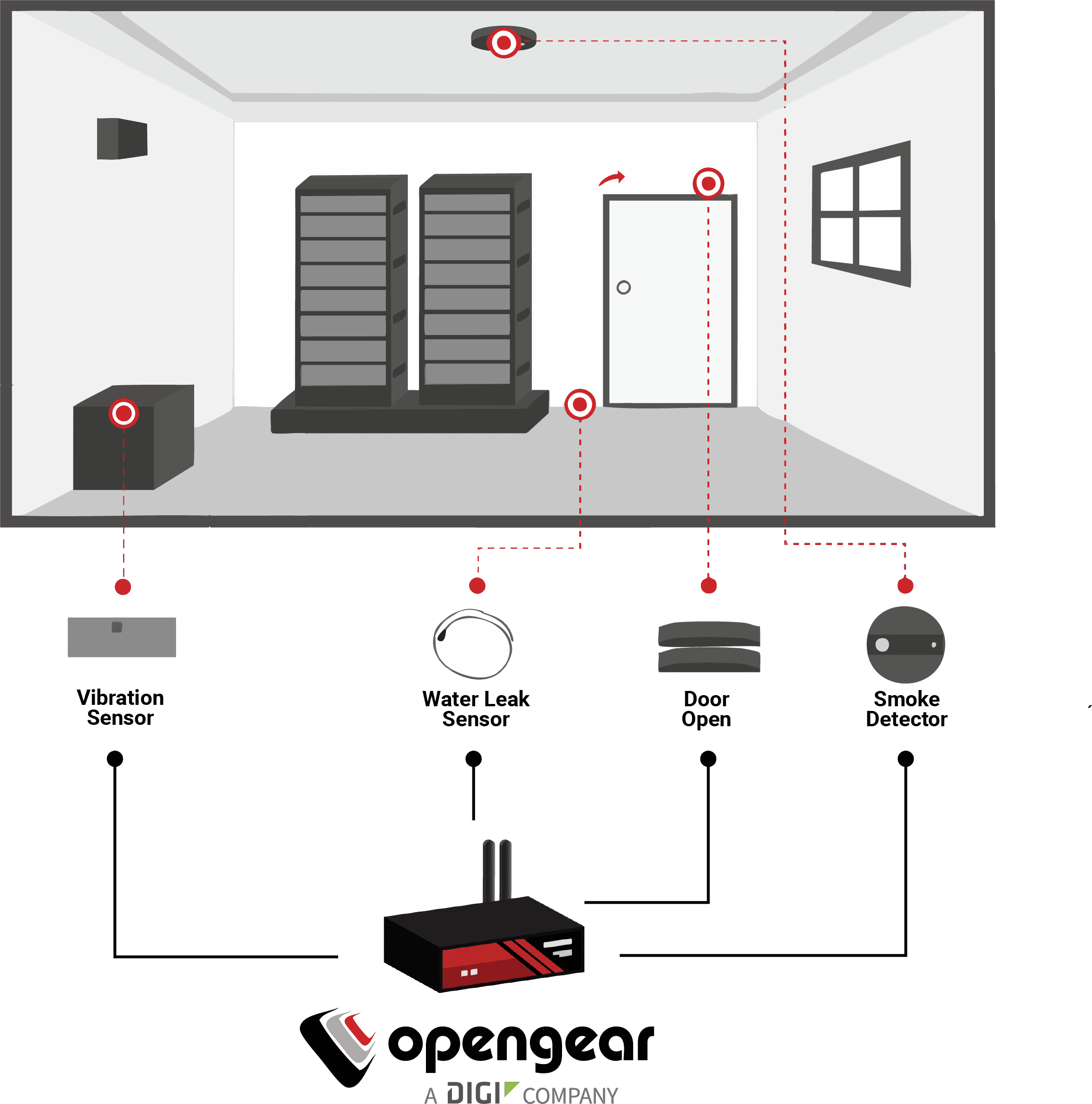Environmental Monitoring Devices
Opengear environmental monitoring devices detect changes in temperature, humidity, smoke or the presence of water in data centers and remote sites – keeping an eye on your IT infrastructure’s physical environment.
Set up automated response sequences through SMS, email or even Twitter through custom scripts. View the ambient temperature and humidity of a remote environment and set the device to automatically send progressive alarms if they rise – from warning levels to critical alerts.

The EMD5000 monitors the status of one or two external dry contacts, which can be connected to a smoke detector, water detector, vibration or open-door sensor giving enhanced visibility into your remote sites.
- Monitors temperature, humidity, and status of one contact/sensor (supports two contacts/sensors when connected to console servers with Classic pinout)
- Works with Opengear console server to provide secure authenticated access
Our environmental devices plug into the serial ports on Opengear console servers and enables remote monitoring using a standard web browser. Alerts are sent via email, SMS and SNMP traps. Automated response sequences can be initiated by environmental trigger events. Reports can be accessed remotely using standard web browsers and data logged with time stamps.
- Displays current status and history in console server web-based UI
- Option to maintain local or remote audit logs of temperature, humidity and sensor status
Smoke Detectors/Alarms

| Smoke detector/alarm | EMD5779-QA | Smoke detector/alarm (220V AC, IEC C-13) |
| Smoke detector/alarm | EMD5890-QA | Smoke detector/alarm (110V AC, NEMA 5-15) |
| Environmental Monitor Device | EMD5000-02 | Environmental Monitoring Device – X2 Pinout |
| Water leak detector | EMD5780 | Water leak detector – 3′ Cable length |
| Door contact sensor | EMD5781-10 | Door contact sensor – 10′ Cable length |
| Vibration sensor | EMD5782 | Vibration sensor – 3′ Cable length |
